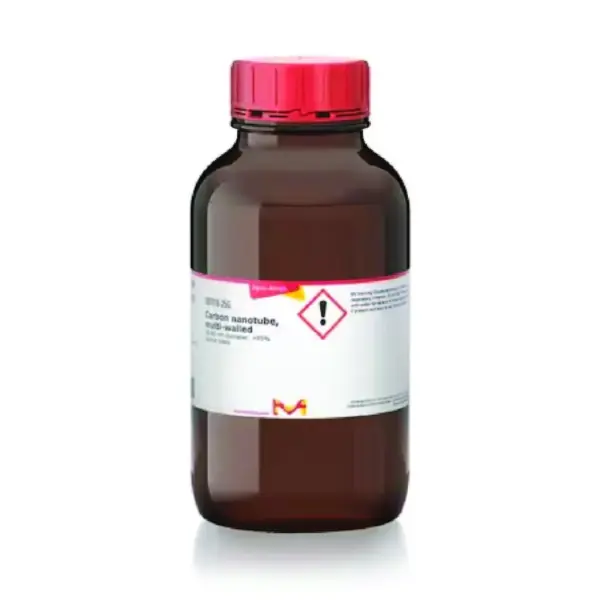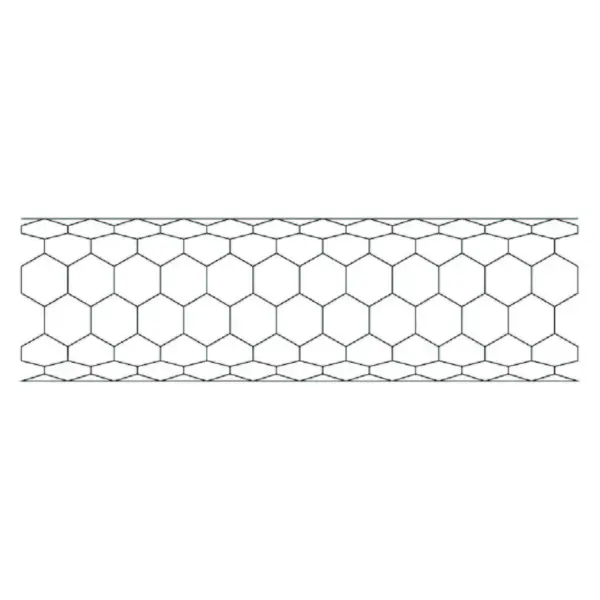- You cannot add zero priced products to the cart.
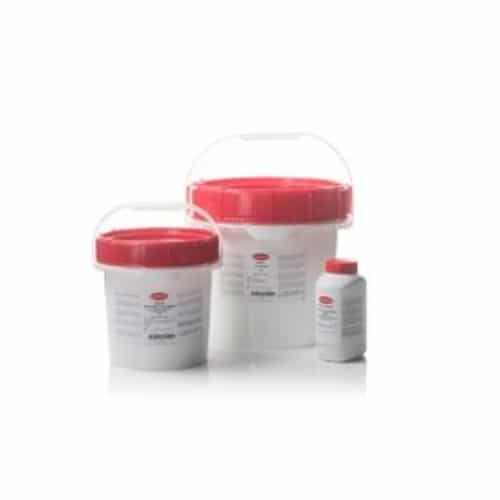
Buffered Peptone Water (ISO) 5kg
RM0.00Brand:
Thermo ScientificTM OxoidTM
Pre-enrich food samples prior to the isolation of Salmonella species using Thermo Scientific™ Oxoid™ Buffered Peptone Water (ISO) (Dehydrated). Buffered Peptone Water is a non-selective pre-enrichment medium and is tested in accordance with ISO 6579 and ISO 11133:2014. It also provides conditions for resuscitation of cells that have been injured by processes of food preservation.
Buffered Peptone Water (ISO), Oxoid Composition
| Typical Formula* |
gm/litre |
| Enzymatic digest of casein |
10.0 |
| Sodium chloride |
5.0 |
| Disodium hydrogen phosphate (anhydrous) |
3.5 |
| Potassium dihydrogen phosphate |
1.5
|
| pH 7.0 ± 0.2 @ 25°C |
Buffered Peptone Water (ISO), Oxoid Preparation:
Add 20.0g of Buffered Peptone Water (ISO) to 1 litre of distilled water. Mix well and distribute into final containers. Sterilise by autoclaving at 121°C for 15 minutes.
Method of use
The sample is added to Buffered Peptone Water (ISO) at a ratio of 1:10, and incubated at 36°C ± 2°C for 16-20 hours before transfer to selective enrichment media.
Storage conditions and Shelf life
Store the dehydrated medium at 10-30°C and use before the expiry date on the label.

Buffered Peptone Water 2.5 kg
RM1,073.00Brand:
Thermo ScientificTM OxoidTM
Pre-enrich food samples prior to the isolation of Salmonella species using Thermo Scientific™ Oxoid™ Buffered Peptone Water (Dehydrated). Buffered Peptone Water is a non-selective pre-enrichment medium. It also provides conditions for resuscitation of cells that have been injured by processes of food preservation.
Buffered Peptone Water, Oxoid Composition
| Typical Formula* |
gm/litre |
| Peptone |
10.0 |
| Sodium chloride |
5.0 |
| Disodium phosphate |
3.5 |
| Potassium dihydrogen phosphate |
1.5 |
| pH 7.2 ± 0.2 @ 25°C |
Buffered Peptone Water, Oxoid Preparation:
Add 20g to 1 litre of distilled water. Mix well and distribute into final containers. Sterilise by autoclaving at 121°C for 15 minutes. It is extremely important that the distilled water used is of a high quality with a low mineral content/conductivity.
Storage conditions and Shelf life
Store dehydrated medium at 10-30°C and use before the expiry date of the label.
Store the prepared medium at room temperature.
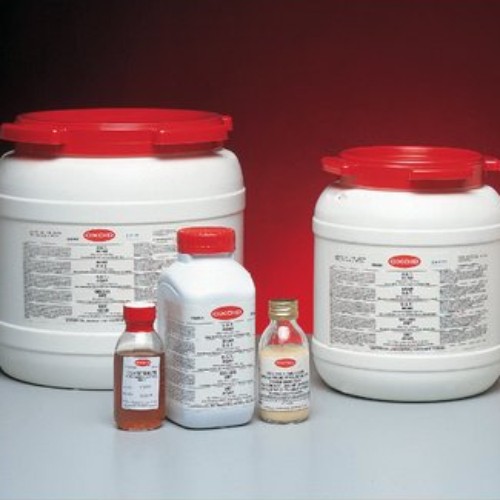
Buffered Peptone Water 5 kg
RM1,933.00Brand:
Thermo ScientificTM OxoidTM
Pre-enrich food samples prior to the isolation of Salmonella species using Thermo Scientific™ Oxoid™ Buffered Peptone Water (Dehydrated). Buffered Peptone Water is a non-selective pre-enrichment medium. It also provides conditions for resuscitation of cells that have been injured by processes of food preservation.
Buffered Peptone Water, Oxoid Composition
| Typical Formula* |
gm/litre |
| Peptone |
10.0 |
| Sodium chloride |
5.0 |
| Disodium phosphate |
3.5 |
| Potassium dihydrogen phosphate |
1.5 |
| pH 7.2 ± 0.2 @ 25°C |
Buffered Peptone Water, Oxoid Preparation:
Add 20g to 1 litre of distilled water. Mix well and distribute into final containers. Sterilise by autoclaving at 121°C for 15 minutes. It is extremely important that the distilled water used is of a high quality with a low mineral content/conductivity.
Storage conditions and Shelf life
Store dehydrated medium at 10-30°C and use before the expiry date of the label.
Store the prepared medium at room temperature.
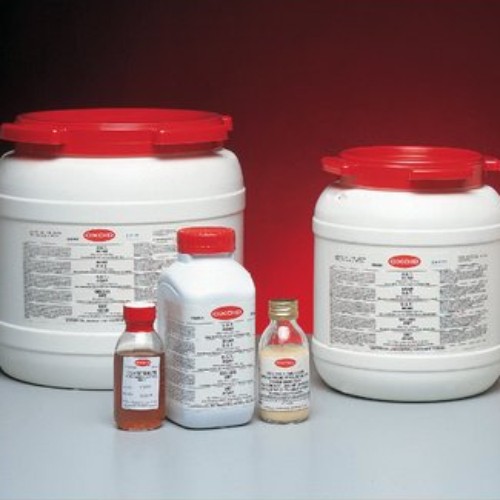
Buffered Peptone Water 500g
RM205.00Brand:
Thermo ScientificTM OxoidTM
Buffered Peptone Water (Dehydrated), CM0509B (Oxoid) is a non-selective pre-enrichment medium that used to pre-enrich food samples prior to the isolation of Salmonella species. It also provides conditions for the resuscitation of cells that have been injured by processes of food preservation.
Buffered Peptone Water, Oxoid Composition
| Typical Formula* |
gm/litre |
| Peptone |
10.0 |
| Sodium chloride |
5.0 |
| Disodium phosphate |
3.5 |
| Potassium dihydrogen phosphate |
1.5 |
| pH 7.2 ± 0.2 @ 25°C |
Buffered Peptone Water, Oxoid Preparation:
Add 20g to 1 litre of distilled water. Mix well and distribute into final containers. Sterilise by autoclaving at 121°C for 15 minutes. It is extremely important that the distilled water used is of a high quality with a low mineral content/conductivity.
Storage conditions and Shelf life
Store dehydrated medium at 10-30°C and use before the expiry date of the label.
Store the prepared medium at room temperature.
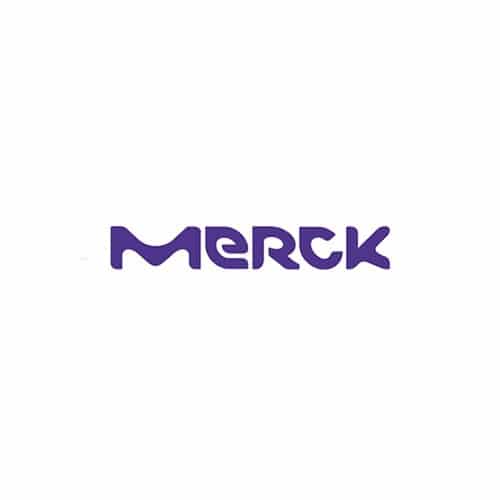
BugBuster® Protein Extraction Reagent
Price range: RM1,385.00 through RM3,648.00Brand:
Merck
Description
Protein stability is fundamental to all aspects of protein research, including analysis by Western blotting. Combine our gentle protein extraction kits with protease inhibitors to obtain stabilized, intact and active proteins.
BugBuster® Master Mix combines BugBuster Protein Extraction Reagent with Benzonase®Nuclease and rLysozyme™ Solution in one convenient reagent. BugBuster Master Mix allows for maximum recovery of active soluble protein from both Gram-negative and Gram-positive bacteria. With the Master Mix, there is no need for dilution or separate addition steps. The two available package sizes provide sufficient reagents for protein extraction from 20 g and 100 g cell paste.
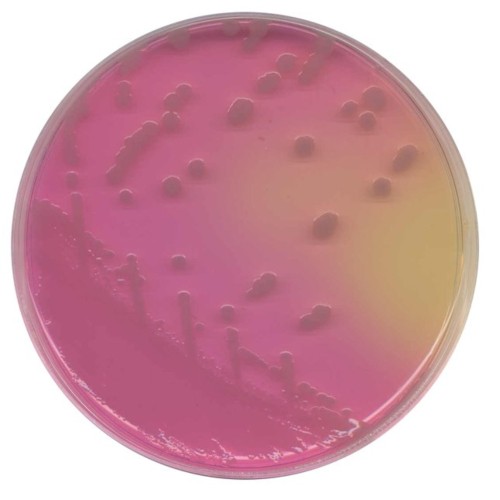
Burkholderia Cepacia Agar Base 500g
RM607.00Brand:
Thermo ScientificTM OxoidTM
Isolate Burkholderia cepacia from respiratory secretions of patients with cystic fibrosis with Thermo Scientific™ Oxoid™ Burkholderia Cepacia Agar Base, which is also used for routine testing of non-sterile inorganic salt solutions in hospital environments. The slower growing B. cepacia can be missed on conventional media, such as blood or MacConkey Agar, due to overgrowth caused by other faster growing organisms found in the respiratory tract of CF patients, such as mucoid Klebsiella species,
Pseudomonas aeruginosa and Staphylococcus species.This may lead to the infection being missed or wrongly diagnosed.
Burkholderia Cepacia Agar Base, Oxoid Composition
| Typical Formula* |
gm/litre |
| Peptone |
5.0 |
| Yeast Extract |
4.0 |
| Sodium pyruvate |
7.0 |
| Potassium dihydrogen phosphate |
4.4 |
| Disodium hydrogen phosphate |
1.4 |
| Bile salts |
1.5 |
| Ammonium sulphate |
1.0 |
| Magnesium sulphate |
0.2 |
| Ammonium ferrous sulphate |
0.01 |
| Phenol red |
0.02 |
| Crystal violet |
0.001 |
| Agar |
12.0 |
| pH 6.2 ± 0.2 @ 25°C |
Burkholderia Cepacia Agar, Oxoid Preparation:
Suspend 18.25g of Burkholderia cepacia Agar Base in 500ml of distilled water, mix well and sterilise by autoclaving at 121°C for 15 minutes. Cool to 50°C and aseptically add the contents of one vial of Burkholderia cepacia Selective Supplement SR0189, reconstituted as directed. Mix well and distribute into sterile Petri dishes.
Storage conditions and Shelf life
Store the dehydrated medium at 10-30°C and use before the expiry date on the label.
Store the prepared plates of medium at 2-8°C.
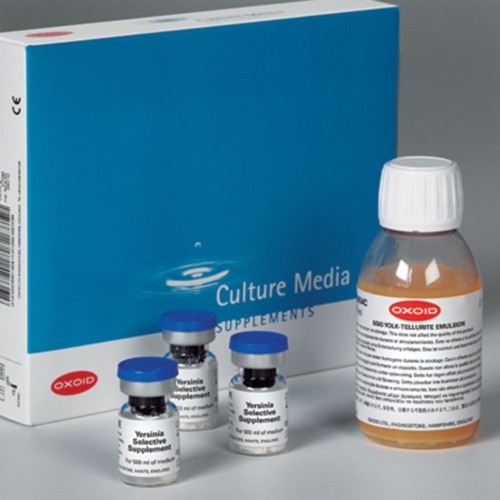
Burkholderia Cepacia Selective Supplement
RM1,567.00Brand:
Thermo ScientificTM OxoidTM
Oxoid Burkholderia Cepacia Selective Supplement is used for the isolation of Burkholderia cepacia.
- Add to Burkholderia Cepacia Agar Base, Part No. CM0995B
- Each vial supplements 500mL of medium
Burkholderia Cepacia Selective Supplement, Oxoid Composition
| Vial contents (each vial is sufficient for 500ml of medium) |
per vial
|
per litre
|
| Polymixin B |
75,000IU |
150,000IU |
| Gentamicin |
2.5mg |
5.0mg |
| Ticarcillin |
50.0mg |
100.0mg |
Burkholderia Cepacia Agar, Oxoid Preparation:
Suspend 18.25g of Burkholderia cepacia Agar Base in 500ml of distilled water, mix well and sterilise by autoclaving at 121°C for 15 minutes. Cool to 50°C and aseptically add the contents of one vial of Burkholderia cepacia Selective Supplement SR0189, reconstituted as directed. Mix well and distribute into sterile Petri dishes.
Storage conditions and Shelf life
Store the dehydrated medium at 10-30°C and use before the expiry date on the label.
Store the prepared plates of medium at 2-8°C.
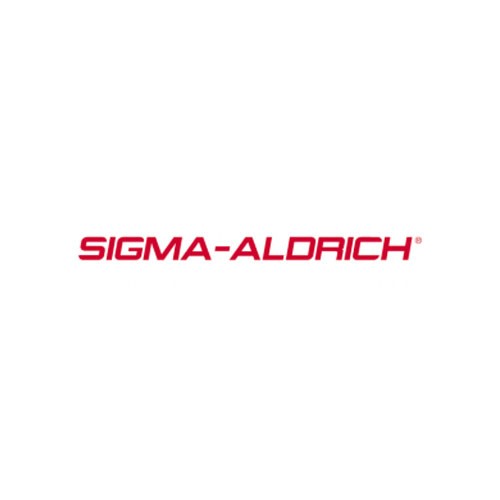
Butadiene sulfone, 98% (Sigma-Aldrich)
RM418.00Brand:
Sigma-Aldrich
Description
CAS number: 77-79-2
Chemical Formula: C4H6O2S
Molar Mass: 118.15 g/mol
Synonyms: 2,5-Dihydrothiophene-1,1-dioxide, 3-Sulfolene
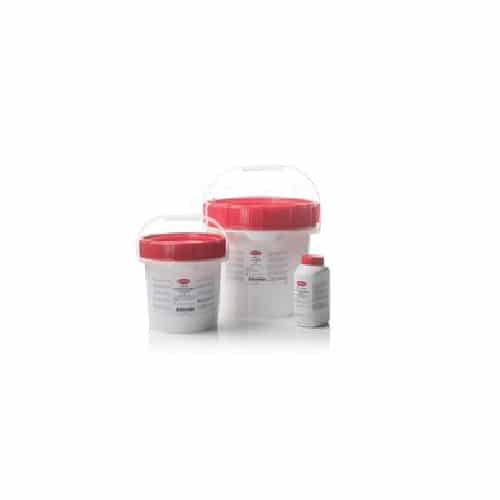
C L E D Medium 500g
RM308.00Brand:
Thermo ScientificTM OxoidTM
Isolate, enumerate and differentiate urinary pathogens with Thermo Scientific™ Oxoid™ C.L.E.D. Medium (Dehydrated). Cystine-Lactose-Electrolyte-Deficient (CLED) Medium which provides good colonial differentiation, clear diagnostic characteristics and prevents swarming of Proteus spp. due to the electrolyte deficiency in the formulation.
C.L.E.D. Medium, Oxoid Composition
| Typical Formula* |
gm/litre |
| Peptone |
4.0 |
| `Lab-Lemco’ powder |
3.0 |
| Tryptone |
4.0 |
| Lactose |
10.0 |
| L-cystine |
0.128 |
| Bromothymol blue |
0.02 |
| Agar |
15.0 |
| pH 7.3 ± 0.2 @ 25°C |
C.L.E.D. Medium, Oxoid Preparation:
Suspend 36.2g in 1 litre of distilled water. Bring to the boil to dissolve completely. Sterilise by autoclaving at 121°C for 15 minutes. Mix well before pouring.
Storage conditions and Shelf life
Store the dehydrated medium at 10-30°Cand use before the expiry date on the label.
Store the prepared medium at 2-8°C.

C10 Chloramphenicol
RM0.00Brand:
Thermo ScientificTM OxoidTM

C30 Chloramphenicol
RM0.00Brand:
Thermo ScientificTM OxoidTM

C50 Chloramphenicol
RM0.00Brand:
Thermo ScientificTM OxoidTM
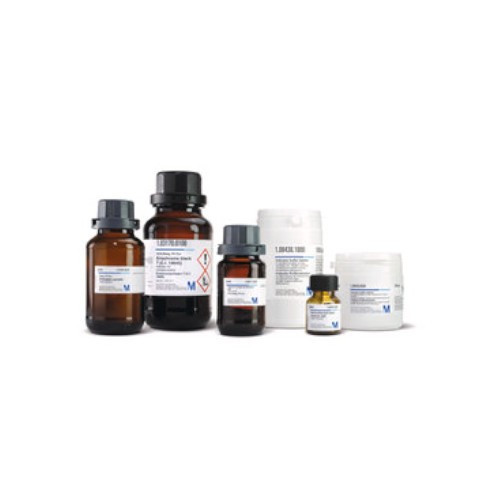
Cadmium Standard Solution, traceable to SRM from NIST (Merck)
RM234.00Brand:
Merck
CAS no.: 7697-37-2, 10325-94-7
Traceability: Traceable to SRM from NIST Cd(NO₃)₂ in HNO₃ 0.5 mol/l 1000 mg/l Cd Certipur®
Synonym: –
Quality level: MQ300
Product specification and SDS for Cadmium Standard Solution.
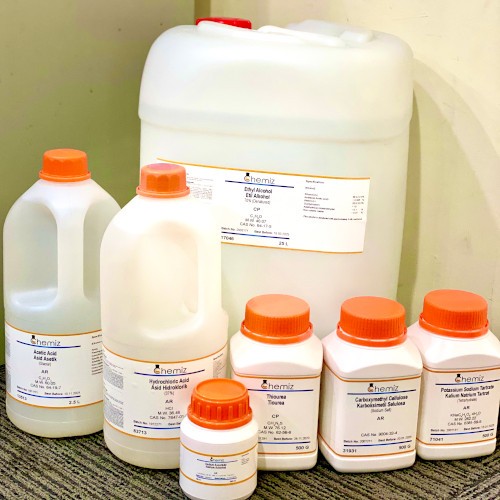
Calcium chloride dihydrate, AR, 500g
RM33.00Brand:
Chemiz
Description
Formula: CaCl2 · 2H2O
In cell culture laboratory, calcium chloride dihydrate is used as a calcium supplement in DMEM. It can also be used to prepare synthetic brine solution. In addition, it can also be used as a desiccant.
Note:
AR: Analitycal Reagent Grade: Reagents for analytical purpose or research work that need high purity.
CP: Chemically Pure Grade: Reagents for regular practical in its original purity.

Calcium Standard Solution, traceable to SRM from NIST (Merck)
RM232.00Brand:
Merck
CAS no.: 10124-37-5, 7697-37-2
Traceability: Traceable to SRM from NIST Ca(NO₃)₂ in HNO₃ 0.5 mol/l 1000 mg/l Ca Certipur®
Synonym: –
Quality level: MQ300
Product specification and SDS for Calcium Standard Solution.
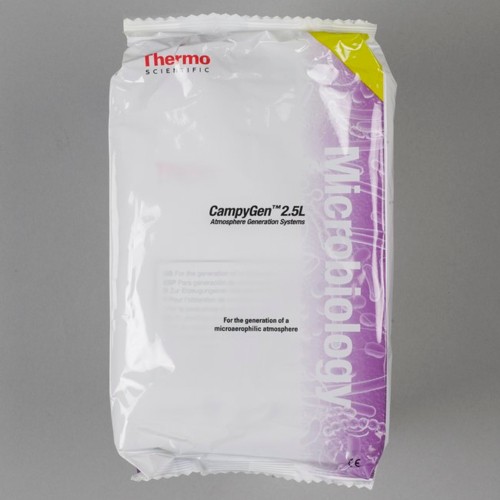
CampyGen 2.5L (10 pack)
RM218.00Brand:
Thermo ScientificTM OxoidTM
- Produce suitable gaseous atmosphere for growth of microaerophilic microorganisms with Oxoid CampyGen 2.5L Sachet.
- No water or catalyst required.
- No hydrogen gas produced.
- For AnaeroJar™ 2.5L, Part No. AG0025A.
Precautions
This product is for in vitro use only
As soon as the CampyGen paper sachet is exposed to air, the reaction will start. It is therefore essential that the paper sachet is placed in the jar and the jar sealed within one minute.
The reaction of the ascorbic acid with oxygen is exothermic. However, the temperature of the CampyGen paper sachet will not exceed 65°C.
Storage
Store at 2-25°C. Under these conditions, the CampyGen sachets will retain their reactivity until the expiry date given on the outer box and on the foil sachet.

CampyGen 3.5L (10/Pack)
RM230.00Brand:
Thermo ScientificTM OxoidTM
Produce suitable gaseous atmosphere for growth of microaerophilic microorganisms with the Oxoid CampyGen 3.5L Sachet.
- No water or catalyst required
- No hydrogen gas produced
- For use with Thermo Scientific Oxoid 3.5L Anaerobic Jar, Part No. HP0011A, HP0031A
Precautions
This product is for in vitro use only
As soon as the CampyGen paper sachet is exposed to air, the reaction will start. It is therefore essential that the paper sachet is placed in the jar and the jar sealed within one minute.
The reaction of the ascorbic acid with oxygen is exothermic. However, the temperature of the CampyGen paper sachet will not exceed 65°C.
Storage
Store at 2-25°C. Under these conditions, the CampyGen sachets will retain their reactivity until the expiry date given on the outer box and on the foil sachet.

CampyGen Compact 20/Pck
RM272.00Brand:
Thermo ScientificTM OxoidTM
- Produce suitable gaseous atmosphere for growth of microaerophilic microorganisms with the Oxoid CampyGen Compact Sachet.
- For use in Compact Plastic Pouch.
- Each pouch holds 2 standard size petri dishes.
- No water or catalyst required.
- No hydrogen gas produced.
- Use with Compact Plastic Pouch Part No. AG0020C and AnaeroGen™ Compact Sealing Clip, Part No. AN0005C.
Precautions
This product is for in vitro use only
As soon as the CampyGen paper sachet is exposed to air, the reaction will start. It is therefore essential that the paper sachet is placed in the jar and the jar sealed within one minute.
The reaction of the ascorbic acid with oxygen is exothermic. However, the temperature of the CampyGen paper sachet will not exceed 65°C.
Storage
Store at 2-25°C. Under these conditions, the CampyGen sachets will retain their reactivity until the expiry date given on the outer box and on the foil sachet.

Campylobacter Agar Base 500g
RM728.00Brand:
Thermo ScientificTM OxoidTM
- Oxoid Campylobacter Agar Base is used for the isolation of Campylobacter jejuni and Campylobacter coli from human, animal, avian and environmental specimens.
- Also available Campylobacter Selective Supplement (Blaser-Wang), Part No. SR0098E NMKL; Bolton Broth Selective Supplement, Part No. SR0183E; Modified Bolton Broth Selective Supplement, Part No. SR0208E; Modified Preston Campylobacter Selective Supplement, Part No. SR0204E; and Campylobacter Selective Supplement Preston, Part No. SR0117E.
Campylobacter Agar Base, Oxoid Composition
| Typical Formula* |
gm/litre |
| `Lab-Lemco’ powder |
10.0 |
| Peptone |
10.0 |
| Sodium chloride |
5.0 |
| Agar |
12.0 |
| pH 7.5 ± 0.2 @ 25°C |
Preston Campylobacter Selective Agar, Oxoid Preparation:
Suspend 18.5g of Campylobacter Agar Base in 475ml of distilled water and bring to the boil to dissolve completely. Sterilise by autoclaving at 121°C for 15 minutes. Cool to 50°C. Aseptically add 25ml of Lysed Horse Blood (SR0048), and 1 vial of Preston Campylobacter Selective Supplement (SR0117 or SR0204) reconstituted as directed and one vial of Campylobacter Growth Supplement (SR0232). Mix well and pour into sterile Petri dishes.
Preston Campylobacter Selective Enrichment Broth, Oxoid Preparation:
Dissolve 12.5g of Nutrient Broth No.2 (CM0067) in 475ml of distilled water and sterilise by autoclaving at 121°C for 15 minutes. Cool to 50°C or below. Aseptically add 25ml of Lysed Horse Blood (SR0048), 1 vial of Preston Campylobacter Selective Supplement (SR0117 or SR0204) and 1 vial of Campylobacter Growth Supplement (SR0232). Aseptically dispense 5ml volumes in sterile small screw-capped bottles. The Selective Enrichment Broth may be stored for up to 7 days at 2-8°C.
Storage conditions and Shelf life
Store the dehydrated medium at 10-30°C and use before the expiry date on the label.
Store the prepared plates at 2-8°C.

Campylobacter Growth Supplement (Liquid)
RM450.00Brand:
Thermo ScientificTM OxoidTM
Oxoid Campylobacter Growth Supplement is a liquid supplement for the enhanced growth and aerotolerance of Campylobacter species.
- For the preparation of Blaser-Wang Medium, Bolton Selective Enrichment Broth, Butzler Selective Medium, and Preston Selective Medium
- Each vial supplements 500mL of medium
Campylobacter Growth Supplement, Oxoid Composition
| Vial contents (each vial is sufficient for 500 ml of medium) | |
| Sodium pyruvate |
0.125 g |
| Sodium metabisulphite |
0.125 g |
| Ferrous sulphate (hydrated salt) |
0.125 g
|
| Water |
2.0 ml |
Campylobacter Growth Medium, Oxoid Preparation:
Add the contents of one vial (2 ml) to 500 ml of a sterile nutrient medium cooled to 50-55°C prepared from Oxoid Columbia Agar, Blood Agar Base No.2, or Campylobacter Agar Base, with 5-7% lysed defibrinated horse or sheep blood, and the rehydrated contents of one vial of Campylobacter Antibiotic Supplement SR0069, SR0085 or SR0098. Mix gently and pour aseptically into sterile Petri dishes.

Campylobacter Selective Supplement (Blaser-Wang) 1 x 10 Vials
RM1,152.00Brand:
Thermo ScientificTM OxoidTM
Oxoid Campylobacter Selective Supplement, Blaser-Wang is used to prepare of Blaser-Wang Selective Medium for the isolation of Campylobacter while inhibiting growth of Candida albicans.
- Add to Columbia Blood Agar Base, Part No. CM0271B
- Each vial supplements 500mL of medium
Campylobacter Selective Supplement, Blaser-Wang, Oxoid Composition
| Vial contents (each vial is sufficient for 500ml of medium) |
per vial
|
per litre
|
| Vancomycin |
5.0 mg |
10.0 mg |
| Polymyxin B |
1,250 IU |
2,500 IU |
| Trimethoprim |
2.5 mg |
5.0 mg |
| Amphotericin B |
1.0 mg |
2.0 mg |
| Cephalothin |
7.5 mg |
15.0 mg |
Campylobacter Selective Medium, Oxoid Preparation:
Reconstitue one vial as directed add the contents of one vial to 500ml of sterile nutrient medium cooled to approximately 50°C prepared from Columbia Agar or Blood Agar Base No.2, with 10% defibrinated horse/sheep blood or 5-7% laked horse blood SR0050, SR0051 or SR0048. Mix gently and pour into sterile Petri dishes.
Storage conditions and Shelf life
Store the dehydrated medium at 10-30°C and use before the expiry date on the label.
Store the prepared medium at 2-8°C.

Campylobacter Selective Supplement (Karmali) 1 x 10 Vials
RM936.00Brand:
Thermo ScientificTM OxoidTM
Oxoid Campylobacter Selective Supplement, Karmali is used for the isolation of Campylobacter jejuni and Campylobacter coli when incubated at 42°C.
- Add to Campylobacter Agar Base (Karmali), Part No. CM0935B
- Each vial supplements 500mL of medium
Campylobacter Selective Supplement, Karmali, Oxoid Composition
| Vial contents:(each vial is sufficient for 500ml of medium) |
per vial
|
per litre
|
| Sodium pyruvate |
50.0mg |
100.0mg |
| Cefoperazone |
16.0mg |
32.0mg |
| Vancomycin |
10.0mg |
20.0mg |
| Cycloheximide |
50.0mg |
100.0mg |
Campylobacter Agar (Karmali), Oxoid Preparation:
Add 21.5g of Campylobacter Agar Base (Karmali) to 500ml of distilled water and bring to the boil to dissolve. Sterilise by autoclaving at 121°C for 15 minutes. Cool to 50°C. Aseptically add 1 vial of Campylobacter Selective Supplement (Karmali) SR0167 or Modified Karmali Selective Supplement SR0205, reconstituted as directed.. Mix well and pour into sterile Petri dishes.
Storage conditions and Shelf life
Campylobacter Agar Base (Karmali) should be stored tightly capped in the original container in a cool, dry place away from bright light. When stored at 10-30°C the medium will remain stable until the expiry date printed on the label.
Precautions
Campylobacter Selective Supplement (Karmali) SR0167 contains cycloheximide which is toxic.
Note the precautions to be taken under HAZARDOUS Products section of the Manual.

Campylobacter Selective Supplement (Skirrow) 1 x 10 Vial
RM748.00Brand:
Thermo ScientificTM OxoidTM
- Oxoid Campylobacter Selective Supplement, Skirrow is used for preparation of Skirrow Selective Medium for the isolation of Campylobacter spp. at 42°C.
- Add to Blood Agar Base No. 2, Part No. CM0271B or Columbia Blood Agar Base, Part No. CM0331B.
Campylobacter Selective Supplement, Skirrow, Oxoid Composition
| Vial contents (each vial is sufficient for 500ml of medium) | |
| Vancomycin | 5.0 mg |
| Trimethoprim | 2.5 mg |
| Polymyxin B | 1250 IU |
Campylobacter Selective Medium, Oxoid Preparation:
Reconstitute one vial as directed aseptically add the contents to 500 ml of a nutrient medium cooled to approximately 50°C prepared from Columbia Agar or Blood Agar Base No.2 , with 10% defibrinated horse or sheep blood SR0050,SR0051 or 5-7% laked horse blood SR0048. Mix gently and pour into sterile Petri dishes.
Storage conditions and Shelf life
Store the dehydrated medium at 10-30°C and use before the expiry date on the label.
Store the prepared medium at 2-8°C.
Carbon nanotube, multi-walled – Sigma-Aldrich
RM2,117.00Brand:
Sigma-Aldrich
Synonyms
MWCNT, MWNT, Multiwall carbon nanotube
Cas No.
308068-56-6
General Description
Carbon nanotubes are hollow cylinders of carbon atoms. They are rolled-up graphene sheets with carbon atoms covalently bonded to each other through hybridisation. Owing to their excellent mechanical and electrical properties, they are widely used in the field of flexible and wearable electronic devices.
Application
Multi-walled carbon nanotubes (MWCNTs) functionalized with a polymer blend can be used as a hybrid catalyst for the degradation of crystal violet under visible light.
Due to their high magnetic sensitivity, MWCNT/manganese–zinc ferrite nanocomposites can be used in integrated nanoscale electronic systems.
They can also be used to fabricate sensors for strain-sensing applications because of their high mechanical flexibility and stability.
Features & Benefits
- Excellent conductivity
- Light weight
- Chemical stability
- Large surface area
- High mechanical strength
Preparation Note
Chemical Vapour Deposition (CVD) Method

